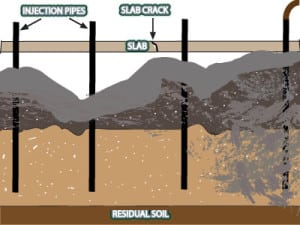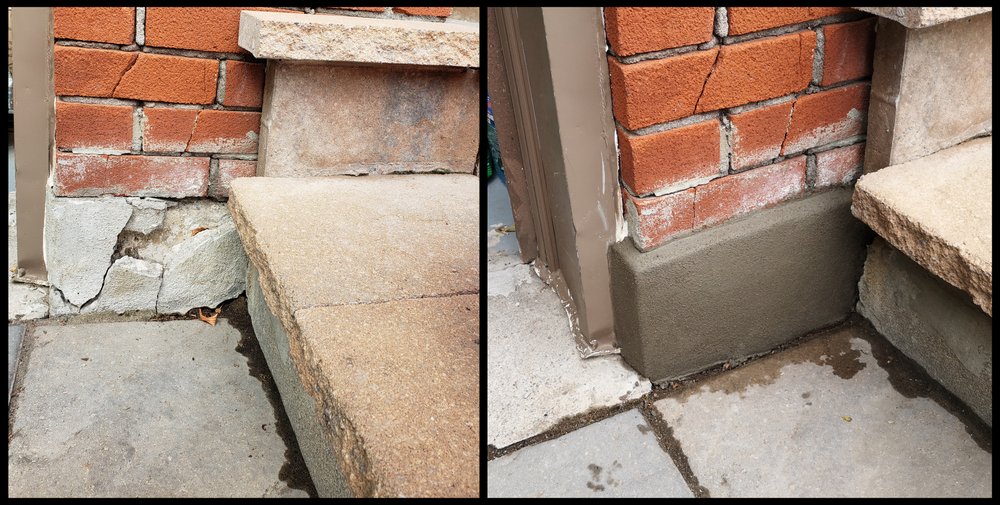FCS Foundation Repair Dallas Concrete Slab Foundation Repair: Making Certain Architectural Honesty
Wiki Article
Structure Repair Service Techniques: A Comprehensive Introduction
Structure Repair Work Techniques: A Thorough OverviewFoundation concerns can cause substantial architectural damage to structures, compromising their security and security. Understanding foundation repair service strategies is essential for engineers, house owners, and service providers involved in building and maintenance jobs. This extensive introduction supplies an in-depth exam of numerous approaches used to attend to structure issues, making sure a protected and solid foundation for any framework.
The guide covers essential strategies such as slab jacking, pier and light beam support, basement wall surface anchoring, soil stablizing, and structure underpinning. Each method is discussed in-depth, highlighting its objective, application, and efficiency. Foundation Repair Dallas. Additionally, the introduction discusses elements to take into consideration when choosing the suitable repair service method, such as soil problems, constructing kind, and budgetary restrictions
Whether you are a home owner looking for to deal with foundation problems or a specialist in the construction industry, this extensive introduction works as a valuable resource, offering vital expertise and understandings right into structure repair service methods.
Piece Jacking
Piece jacking, frequently used as a trusted and frequently utilized method, raises sunken concrete slabs by injecting a stabilizing material below, effectively restoring the structure to its initial degree. This strategy is generally made use of in scenarios where the ground has actually cleared up or changed, creating concrete pieces to sink or end up being unequal. Slab jacking is an affordable alternative to completely replacing the concrete, as it resolves the origin reason of the issue and offers a long-lasting solution.
One of the major advantages of slab jacking is its minimally invasive nature. The small holes pierced for the shot process can easily be patched, leaving no noticeable indicators of fixing. In addition, piece jacking can be finished swiftly, commonly within a day, decreasing disturbance to the property owner. This strategy is ideal for a variety of concrete frameworks, including driveways, sidewalks, patios, and cellar floorings.
Pier and Beam Support
One more commonly used method in structure repair service is pier and beam support, which develops upon the previous method of piece jacking to provide added structural assistance and stability to the structure. When the structure has received significant damages., this technique is especially useful in areas with weak dirt conditions or.Pier and beam of light reinforcement includes mounting vertical concrete or steel piers underneath the structure to transfer the weight of the framework to much deeper, much more secure soil layers. These piers are tactically positioned along the perimeter of the foundation and at indoor bearing walls to uniformly disperse the lots and avoid more negotiation.
To reinforce the beam of lights, added steel or concrete supports are added to enhance and maintain the existing light beams. This is done by attaching steel brackets or beam of lights to the existing light beams and safeguarding them with bolts or various other bolts. The reinforcement products are chosen based upon the details requirements of the foundation and the extent of the damage.
Pier and beam of light support not just gives immediate support to the foundation but also assists to stop future negotiation and architectural damages. FCS Foundation Repair Dallas Flatwork Concrete Services. By rearranging the tons and transferring it to stronger soil layers, this technique ensures the long-term security and honesty of the structure
Basement Wall Anchoring
Basement wall view publisher site surface anchoring is an essential strategy used in foundation repair work to enhance the security and architectural stability of the foundation, particularly in locations susceptible to soil movement and cellar wall surface failing. When the dirt around a foundation experiences excessive moisture or shifts due to geological factors, it can apply considerable pressure on the cellar walls, causing them to crack, bow, and even collapse. This can result in serious architectural problems and compromise the safety and security of the whole building.Cellar wall securing includes installing specialized supports or helical tiebacks into the ground surrounding to the structure walls. These supports are developed to pass through deep into secure soil or bedrock, creating a solid connection in between the foundation and the ground. By distributing the lots of the foundation equally and withstanding the side next forces applied by the soil, cellar wall securing provides extra assistance and avoids more motion or damage of the walls.
There are various kinds of basement wall surface anchoring systems readily available, consisting of steel wall surface supports, helical tiebacks, and carbon fiber straps. The selection of system depends upon variables such as the seriousness of the wall surface movement, dirt problems, and the specific requirements of the structure. Professional structure fixing professionals evaluate these variables and recommend the most ideal securing service for every unique circumstance.
Dirt Stabilization
To deal with the difficulties of dirt activity and ensure the security of structures, soil stabilization methods are utilized in structure fixing. Soil stabilization describes the procedure of boosting the residential or commercial properties of the dirt to boost its load-bearing ability and lower its sensitivity to activity. There are numerous approaches used for soil stabilization, each tailored to the specific qualities of the soil and the requirements of the foundation.
Mechanical stablizing is an additional widely utilized approach that involves the physical adjustment of the dirt. This technique includes techniques such as compaction, which raises the density of the soil, and dirt substitute, which involves eliminating weak dirt and changing it with even more stable materials.
Furthermore, dirt stablizing may also include making use of geosynthetic products like geocells, geotextiles, or geogrids. These products are positioned within the soil to reinforce it and distribute the tons a lot more you can try these out equally, minimizing the threat of negotiation or heave.
Structure Support
Just how can structure underpinning effectively deal with the difficulties of soil motion and make sure the stability of structures? Foundation foundation is a method utilized to enhance and support existing foundations that have been affected by soil movement. This method entails expanding the deepness or breadth of the structure to a much more steady soil layer or redistributing the lots throughout a bigger location, thus improving its load-bearing capacity.There are several sorts of structure base methods typically used in the sector. One approach is mass concrete base, where new concrete is poured under the existing foundation to enhance its deepness and stability. Another technique is light beam and base foundation, which includes constructing enhanced concrete beam of lights below the existing foundation, moving the tons to deeper, extra steady soils.
Helical heap base is also generally utilized. It involves mounting helical stacks into the ground underneath the foundation, which give extra support and security. These piles are screwed right into the soil and can be made use of to move the load of the framework to more experienced dirt layers.
Conclusion
To conclude, foundation fixing techniques play an essential function in keeping the structural honesty of buildings. Piece jacking, pier and beam support, cellar wall anchoring, dirt stabilization, and foundation support are all efficient approaches used to attend to foundation problems. By applying these techniques, property owners can make certain the stability and security of their frameworks for years to find.Cellar wall surface anchoring is an important method made use of in structure repair service to boost the stability and structural stability of the structure, particularly in areas susceptible to dirt activity and cellar wall failure.To attend to the obstacles of dirt movement and guarantee the stability of structures, dirt stablizing strategies are employed in foundation repair work. There are a number of techniques made use of for dirt stablizing, each customized to the specific characteristics of the soil and the demands of the foundation.
Foundation foundation is a method utilized to enhance and maintain existing structures that have been impacted by soil motion. Slab jacking, pier and beam of light reinforcement, basement wall anchoring, soil stabilization, and foundation support are all reliable approaches utilized to resolve structure problems.
Report this wiki page